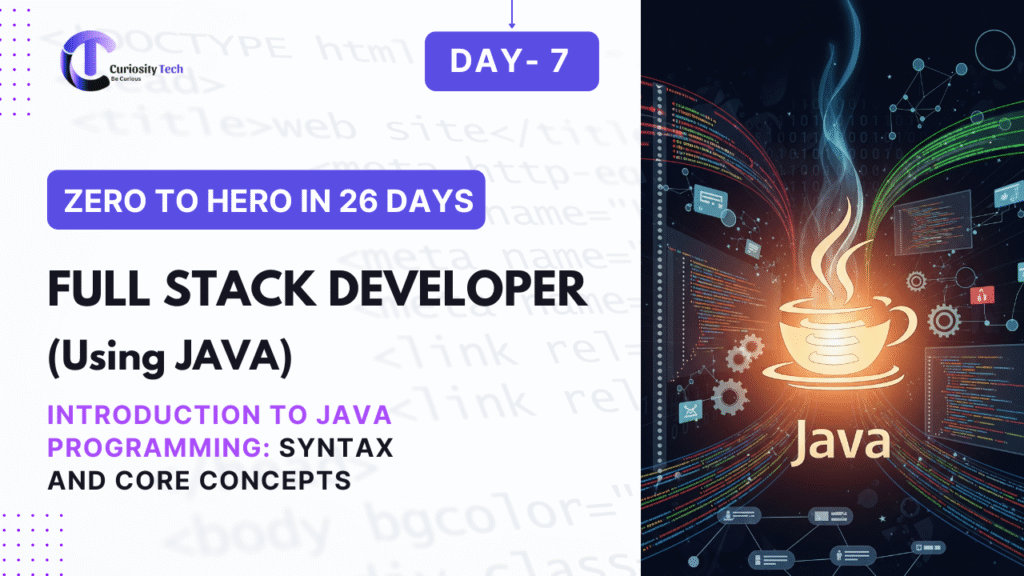Introduction
Java is the backbone of enterprise-grade applications, mobile apps (Android), and backend systems. As a Full Stack Developer, a solid understanding of Java’s syntax and core concepts is crucial to building scalable, maintainable, and high-performance applications. Unlike some languages, Java emphasizes robustness, portability, and security, making it a favorite among developers worldwide.
At CuriosityTech.in, we ensure developers don’t just memorize syntax but understand Java from the ground up, with hands-on examples and industry-relevant projects.
Why Learn Java in 2025?
- Platform Independence: Write once, run anywhere (JVM).
- Strong Typing & Object-Oriented: Enforces robust coding practices.
- Rich Ecosystem: Spring, Hibernate, and countless libraries support development.
- High Demand in Enterprise: Backed by millions of applications and systems globally.
Java Syntax Essentials
| Concept | Description | Example |
| Variables & Data Types | Storage for information. Primitive (int, char) vs Reference (String, Objects) | int age = 25; String name = “Bhavesh”; |
| Operators | Arithmetic, relational, logical, assignment operators | int sum = a + b; |
| Control Flow Statements | if, switch, for, while | if(score > 50){ System.out.println(“Pass”); } |
| Methods | Functions to perform tasks | public int add(int a, int b){ return a + b; } |
| Classes & Objects | Core of OOP | class Car { String model; } Car c = new Car(); |
Core Concepts of Java
1. Object-Oriented Programming (OOP) Basics
- Class: Blueprint for objects.
- Object: Instance of a class.
- Inheritance: Reuse of code from another class.
- Polymorphism: One interface, multiple implementations.
- Encapsulation: Hiding internal state; only exposing necessary methods.
- Abstraction: Focus on essential qualities, hide complexity.
2. Java Memory Management
- Heap & Stack: Where Java objects and variables reside.
- Garbage Collection: Automatic memory management to prevent leaks.
3. Exception Handling
- Handling runtime errors gracefully using try, catch, finally.
- Example: Avoid crashing when dividing by zero.
try {
int result = 10 / 0;
} catch(ArithmeticException e) {
System.out.println(“Cannot divide by zero!”);
}
Java Program Structure Example
public class HelloWorld {
public static void main(String[] args) {
String name = “CuriosityTech Learner”;
System.out.println(“Hello, ” + name + “!”);
}
}
Explanation:
- public class HelloWorld → Declares the class.
- public static void main → Entry point of the application.
- System.out.println → Prints output to the console.
Tips for Beginners
- Master OOP fundamentals early.
- Practice small programs daily.
- Understand Java’s strict type system; it prevents errors.
- Use meaningful variable and method names for readability.
- Explore CuriosityTech.in tutorials that provide step-by-step projects.


Conclusion
Java is more than just syntax; it’s a mindset for structured, robust programming. By mastering its core concepts and understanding the syntax deeply, you build the foundation for advanced topics like Spring Boot, REST APIs, and Full Stack Development.
At CuriosityTech.in, learners get hands-on projects, real-world examples, and personalized guidance, ensuring they not only understand Java but also apply it effectively in Full Stack projects.



